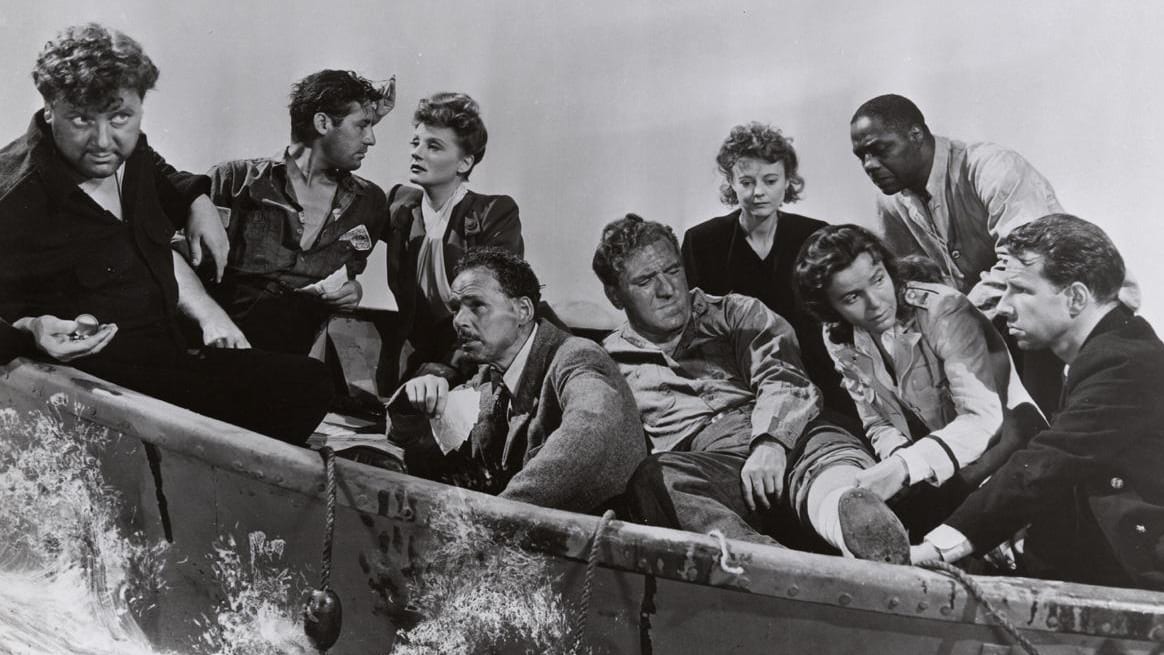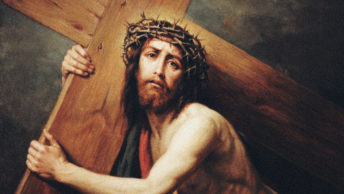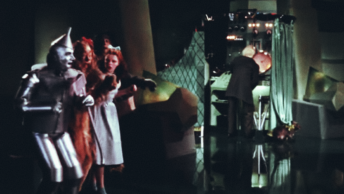One of Alfred Hitchcock’s most memorial films was his 1944 classic, Lifeboat, which depicted eight survivors adrift in a boat after their ship had been sunk by a Nazi submarine. Their story is one of courage, self-sacrifice, and Christian charity in the face of tremendous odds. Working together helped them survive their terrible ordeal.
Moral perceptions have greatly changed since 1944. Fewer than 30 years after Lifeboat, liberal Catholic Martin Sheen starred in The Last Survivors. After a typhoon had sunk his ship, Sheen assumed command of a lifeboat, bursting at the seams with survivors. The boat was in serious danger of floundering and possibly losing everyone. Sheen is forced to play God and decide who may remain in the boat and who would be cast overboard.
These hard decisions impaled him on the horns of dilemma. He arbitrarily established a natural selection, resting precariously on an amorphous human value. The elderly were the first to be jettisoned, followed by the weak and unfit. In an over-crowded lifeboat, my money is on an elite of scientists, intellectuals, and authority figures, who always seem to head anyone’s survivors’ list.
For an historical parallel, one need only look to Adolph Hitler and Nazi Germany in the 1930s. One of his first acts in purifying the German race was the elimination of all useless eaters, the weak, the elderly, the infirm, and of course the Jews because they were sinking the Nazi lifeboat. His notorious T-4 Program in 1939 euthanized over 250,000 Germans. The program’s success served as a bellwether for the Final Solution to the Jewish Question.
This current attitude is now widespread in the West. To leftist environmentalists, the world is a big lifeboat, bursting at the seams with unnecessary humanity. The earth’s resources are limited. The world is running out of petroleum, water, and all the resources to sustain life. Global warming or its descendant climate change ranks now as the biggest threat to the planet’s survival. Why? Who else is responsible for the villainous carbon feet prints.
Led by such disoriented neo-Malthusians, Green Marxists have preached a gospel of death and the annihilation of the world’s useless population. Birth control, abortion, global plagues, a DDT ban, and wars are mere tools in their shop of destruction.
The late Garrett Hardin, former Professor Emeritus of Ecology, at the University of California, at Santa Barbara coined the term Lifeboat Ethics. He believed rich nations were lifeboats and the sea around them filled with poor people who would swamp the boat if helped. Government leaders should stifle their better angels and deny aid to the world’s poor people. Rather than world savior, Hardin and his heirs are more akin to a modern Charon, the Stygian boatman of death who ferried souls across the Underworld’s River Styx.
Hardin’s lifeboat metaphor has infected many schools and universities. Ethics teachers and moral philosophies have established numerous examples of life’s difficult choices that involve railroad tracks, trolleys, shipwrecks and inadequate food. In each case, there is a hierarchy of human values that decides these tough moral choices. In each example, many innocent people must perish for the greater social good.
Some of the euphemisms used to hide the immorality of their twisted examples include altruistic adultery, sacrificial suicide, and merciful murder. Some cases even favorably countered the family pet against a total stranger. Such exercises reduce objective morality to a situation ethic that customizes moral choices to the group’s collective life style or personal needs.
Most communists and some liberals also deny absolute truth. They will never admit that there is anything like human nature. They think mankind can be sculpted and molded like molten clay. Their solemn vow to change human nature in the past century is writ in large letters of violence, bloodshed and 170-million dead.
The ancients knew better. Greek philosopher, Heraclitus, wrote that history is like a river, which flows through time. Paradoxically, the river is always changing yet remains the same river. While there have been many variations in governments, cultural attitudes, language, style, technologies, the one constant has been the inner struggle that is evident in each and every human being. It is the universal tug of war of good and evil that has always existed in each human being.
Pagan Indian tribes have portrayed this inherent trait as two wolves: the one representing peace, love and honor and the other hate, greed and lust. When asked which one wins, the answer is the one you feed. St. Paul revealed the same moral civil war in Romans 7:19: For I do not the good I want but the evil I do not want. Comedian Flip Wilson’s character, Geraldine, explained her naughty behavior in more secular terms. The devil made me do it. The Catholic Church has called this innate quality original sin, an attraction for evil, present in every human soul. (Except Jesus and Mary)
During the long reign of the Catholic Church in Europe, moral issues were more clearly seen, like an old movie in black and white. Of course, there was hypocrisy, some immoral popes and inconsistent thinking; but, until the 16th century, morality was more objective. The writings of St. Augustine and St. Thomas Aquinas emphasized that the laws of God were written on the hearts of each and every human being. Men would be judged for all eternity by their ability to follow the dictates of their consciences, formed by these natural laws.
With the advent of the Protestant Revolution and Martin Luther’s ideas about the absolute freedom of conscience, the first visible crack in the dike of faith appeared. Luther’s notions gradually clouded the teaching of absolute morality, leading to a more subjective understanding of sin and punishment. The comprehension of what was right and wrong evolved into a choice of one’s own truth and one’s own morality.
More fissures in the Christian moral edifice surfaced after the 1513 publication of Niccolò Machiavelli’s The Prince. The author observed that his political contemporaries lived by the maxim of I must kill you before you kill me. He concluded that since the Italians of his day were morally weak, cowards, or poor, traditional rules had to be revised.
Machiavelli’s ideal prince could be decent, and principled but he must never let his principles get in the way of the evil he must do to preserve himself and his state. His cardinal rule had to be the ends always justified whatever means he must employ. According to Arthur Hippler, in the Wanderer, Machiavelli was the first Western thinker to promote the idea that moral evil is necessary for political good. One need only view America’s Catholic politicians to witness how prevalent his ideas have become.
The modern merger of Luther and Machiavelli has become the dominant philosophical underpinning of American secularism. Following the lead of several of his papal predecessors, Cardinal Joseph Ratzinger set the course of his papacy with his homily on April 18, 2005. In it he condemned the many dangerous ideological currents that have tossed the small boat of thought of many Christians on waves of Marxism, liberalism, collectivism, radical individualism and… a vague religious mysticism.
Echoing St. Paul’s warnings to the Ephesians (4:14-16) the future pope stressed that we must no longer be children, tossed to and fro and carried about by every wind of doctrine. Every day, new sects are created, underscoring St. Paul’s warning to beware of the human trickery, which tries to draw those into error. This has inevitably ensconced the world in a dictatorship of relativism, threatening the foundations of moral truth.
Such a dictatorship is especially true of the United States. Moral relativism has emerged as the ruling heart of secularism and has permeated every aspect of American culture. Cardinal Ratzinger recognized this in his book, Truth and Tolerance, when he referred to Egyptologist, Jan Assmann, who claims that it was Moses who introduced the notion of truth into religion and insisted that the Jews reject all false idols.
According to Assmann, Moses’ destruction of the Golden Calf set an unfortunate standard for monotheistic intolerance. On the contrary, Assmann wrongly asserts that relativism serves the operative principle that delivers diversity, tolerance, mutual respect, and civil peace, in contrast to religion, which brings wars and persecutions. In order to dismiss his disingenuous reasoning, one need only cite the surfeit of hate crime legislation, designed to squelch any criticism of government’s protections for its favored minorities.
No place is the convergence of Luther and Machiavelli more evident than in the mortal clash over the life issues: abortion, euthanasia, and Embryonic Stem Cell Research. The abortion movement, which attached its lucky star to the comet of the Sexual Revolution of the 1960s, has been saturated with freedom of conscience and the good end justification ever since then. In a self-indulgent culture, such as ours, the idea of choice resonates well with millions of Americans, especially women who have bought the radical feminist message of the Cultural Marxists and the Rockefeller Foundation.
The logic, morality, or even the rhetoric of the right to choose an abortion has been never challenged or explored by its advocates. No thought is ever given to what is chosen. It started with an emphasis on the tough cases, the small percentage of unwanted pregnancies that resulted, purportedly from rape or incest. These cases, which accounted for less than 1%, were the nose of the camel that eventually opened the flap for abortion on demand. After 46 years and 58-million unborn dead in this country, the ends justifying the means rhetoric has held fast, despite the public’s growing unease with unrestricted abortions.
With the precedent of abortion rights firmly entrenched within the cultural, social and legal American edifice, the proponents of the culture of death moved on to the country’s elderly population, which brings us back to the Stygian Life Boat. The rhetoric of personal choice and heroic ends has the same resonance. Only the targets have changed.
The elderly have been conditioned to feel like a burden to their children and to society. Fear of disability and pain, plus the inevitable loss of youth and vitality, make their lives seem meaningless and desperate. Right to Die movements, with their assisted suicides, now in several states and counting, will inevitably lead to involuntary euthanasia, which is gaining momentum around the world, especially in the Netherlands.
The cannibal experimentation on unborn life in its nascent form seems like something abstracted from the work of Mary Shelley, so grotesque does it seem.
The entertainment industry has adopted Luther and Machiavelli. Ironically, it was the lawlessness of the 1960s and early 1970s that produced the vigilante film. These films celebrated loners, like actors Clint Eastwood and Charles Bronson, who circumvented the bureaucratic facade of law and order to protect their families and society from the leftist decisions of Supremacist judges. Eastwood’s Dirty Harry movies lionized Harry Callahan who was tired of seeing his good police work undone by liberal judges and his stiff bureaucratic superiors. He constantly disregarded their authority by any means possible, even defiantly killing some of the criminals he encountered.
Charles Bronson was a private citizen whose family had been violated by a gang of thugs who danced around justice and punishment with ease and dexterity. In the Death Wish quadrilogy, the public and the police silently applauded his acts of deadly retribution.
No current television series better demonstrates the civil union of Luther and Machiavelli than the extremely popular 24, starring Keifer Sutherland. Over the course of its eight seasons, the show moved slowly toward the abyss of moral nihilism. Inspired by 9/11, Sutherland plays the refractory, Jack Bauer, who works for a fictitious government agency CTU (Counter-Terrorism Unit). In the course of his service, Bauer has faced national threats like a nuclear bomb, the release of a deadly virus, and the sabotage of American nuclear plants. Had it lasted longer, I am confident he would have annihilated a band of terrorists, opposed to climate change.
Bauer broke every moral rule in the book. This antinomian hero is a modern Prometheus unbound from any conventional idea of moral order, except the seriously pragmatic goals of protecting his family and saving the world. In relentless pursuit of his goal, Bauer has tortured, even murdered suspects, done drugs, robbed and terrorized citizens—all in the name of the greater good.
In one gruesome episode, he executed one of his CTU superiors on the command of a virus-toting terrorist. Under the guise of entertainment, the moral attitudes of shows, like 24, have subtlety dulled the American people’s sensitivity to what is right and wrong. All this has dulled our moral sensitivity so that the life boat will appear more benign.
Arguments that promise cures, safety, or an easier life are attractive to all human beings– even devout Catholics. The secret is to recognize the insidious nature of these seductive arguments and focus on the moral principle that one can never do evil to effect good. The first rule of moral choice is what pagan medical pioneer Hippocrates urged: first do no harm!
St. Thomas Aquinas wrestled with this moral quandary over 500 years ago and arrived at the principle of the double effect, which has helped alleviate much of the anguish over such human responses. Not to be misconstrued as a compromise with moral evil, his underlying principle is that if an action has two results, one of which is good and the other which is evil, the action may be performed if the evil effect is not intended. Self-defense of individuals, families, and states flows from his saintly reasoning.
Church teachings, based on St. Thomas, have allowed governments, soldiers, and private citizens to morally defend themselves against invasions, criminals, and personal assaults. No anti-abortionist can ever take the life of abortionists, even though it would save countless lives. A soldier or civilian who throws his body on a grenade or flies his plane into an on-coming torpedo may do so, only to save the lives of others, not to end his own life, though that may be the actual result.
All of the above underscores the fact why it is imperative that absolute moral truth never be eliminated from democratic rule or perhaps returned to our government. Otherwise, the country will be doomed to follow the moral behavior dictated by moral pragmatism and hegemonic power. Catholics and other moral minded people must eschew the temptations of Machiavelli and Luther and remain firm in their beliefs, like rocks in a poisoned river of relativism.








